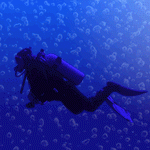Yet in July 2009, DART-IC determined that Bisphenol A (BPA), a major component in plastic products was safe and refused to classify it as a toxicant under California’s strict safe drinking laws.
BPA is a resin used in sports and baby bottles, shatterproof windows, medical devices and other consumer and commercial products. DART-IC’s decision was based on testimony as well as reports from the National Toxicology Program, the Environmental Protection Agency, the Centers for Disease Control, and investigative scientific bodies in Canada, Australia, Japan and the EU, all of which found BPA posed no threat.
Last year the Statistical Assessment Service (STATS) at Virginia’s George Mason University applied statistical methodology to the BPA story and found the media ignored all of the research that pointed to BPA’s safety.
Trial lawyers are already trolling for plaintiffs. In one Missouri case, the judge all but outright dismissed a BPA case even before trial. As trial lawyers cannot find a single damaged consumer, there are no injury claims. The basis of their case is “fraud and dishonest marketing.”
In the alternate universe that is the trial bar, BPA manufacturers and distributors are being sued for not adding warning labels that would say, in effect, “this product has been deemed safe by numerous government and scientific bodies but some special interest groups still don’t like it.”
Environmental extremists cannot abuse themselves of the false notion that BPA is harmful. They’ve created a political movement around it, raised money on it, and the trial bar has contributed heavily to that effort for obvious, self-serving reasons.
See also http://www.stats.org/stories/2009/Scien ... ly9_09.pdf













